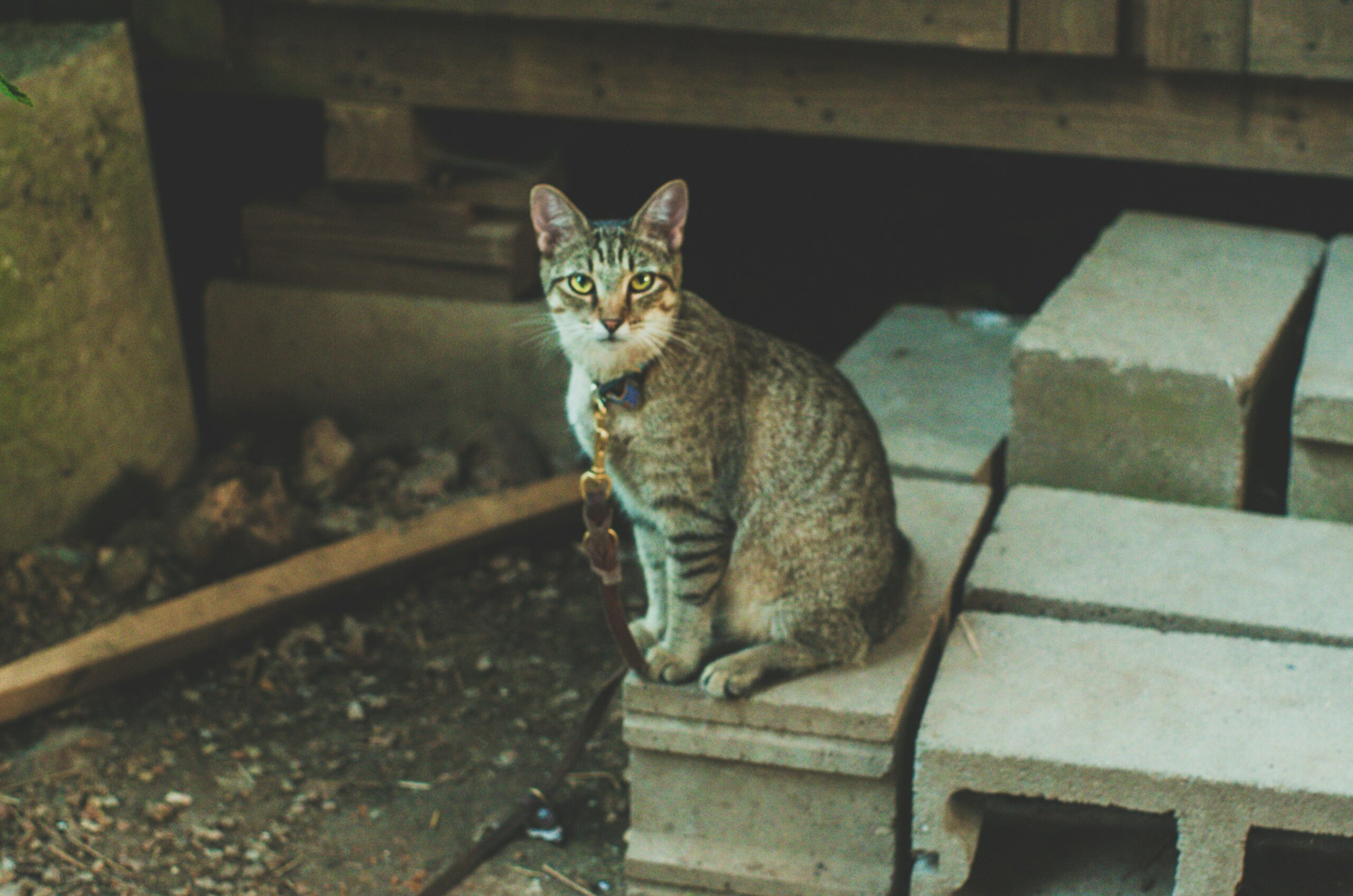How to Train Your Pet to Be Housebroken
Introduction to Housebreaking
Housebreaking is a fundamental aspect of pet training that ensures a clean home and fosters a harmonious relationship between pet and owner. This process involves teaching pets, primarily dogs and cats, to relieve themselves in designated areas outside the home or in a litter box, rather than inside the house. Successfully housebroken pets understand where to go to the bathroom, ultimately leading to a household free from accidental messes
The goal of housebreaking is to achieve zero accidents in the house by consistently guiding pets to use appropriate elimination spots. This training is not just about convenience but also essential for maintaining hygiene and health standards within the home. For dogs, housebreaking often involves establishing a routine and using cues or commands, while for cats, it typically focuses on litter box training and positive reinforcement.
Housebreaking offers tremendous benefits, creating a more comfortable and stress-free environment for both pets and their owners. For pet parents, it means less time spent cleaning and a reduction in the frustration associated with unexpected accidents. For pets, successful housebreaking provides clear boundaries and expectations, contributing to their overall well-being and sense of security.
Both dogs and cats can be housebroken with patience, consistency, and the right techniques. Understanding the importance of housebreaking is the first step towards achieving a clean and happy home, where pets feel loved and owners feel content with their furry companions. This blog post will delve deeper into effective housebreaking strategies, offering practical advice and tips to help you and your pet succeed in this crucial aspect of training.
“`
Understanding Your Pet’s Needs and Behaviors
Effective housebreaking begins with a deep understanding of your pet’s natural behaviors and biological needs. Recognizing that each animal exhibits different potty habits and signals is fundamental to creating a successful training regimen. For instance, dogs often manifest their need to relieve themselves through specific actions such as sniffing the ground, circling, or scratching at doors. Cats, on the other hand, might meow insistently or head to a particular corner where they assume their litter box should be.
Being tuned in to these signals enables you to respond promptly and appropriately, thus reinforcing desired behaviors. Typical times when pets usually feel the urge to relieve themselves include immediately after eating, drinking, or waking up from a sleep. Observing and anticipating these moments allows you to guide your pet to the correct potty location without delay, helping to minimize accidents inside the home.
Further, understanding your pet’s psychological needs is just as critical. Animals, like humans, thrive on positive reinforcement. Using gentle encouragement, praises, and rewards when they eliminate in the correct spot can significantly accelerate the housebreaking process. Conversely, negative reactions, such as scolding or punishment, can create confusion and anxiety, potentially setting back your training efforts.
Another layer to consider is the biological differences between pets. Puppies, for instance, have underdeveloped bladders and may need more frequent bathroom breaks compared to older dogs. Kittens likewise have their own unique set of behaviors and timing related to litter box training. Recognizing these nuances ensures that your training schedule is appropriately tailored to your pet’s developmental stage.
By closely observing and understanding your pet’s behaviors and aligning your actions to meet their biological needs, you establish a strong foundation for housebreaking success. This attentiveness not only aids in effective training but also fortifies the bond between you and your pet, making the housebreaking journey a rewarding experience for both parties.
“`
Setting Up a Housebreaking Routine
Establishing a consistent housebreaking routine is essential for effectively training your pet. The essence of this approach lies in repetition and predictability, which help your pet understand expectations. A structured schedule can significantly reduce accidents and confusion, ensuring a smoother housebreaking process.
Begin by creating a daily timetable that includes regular feeding times. Consistent meal schedules help regulate your pet’s digestion, making bathroom patterns more predictable. For puppies and younger pets, feeding them at the same times each day will help you anticipate when they will need to go outside.
Bathroom breaks should be scheduled at strategic times during the day. It is advisable to take your pet out right after they wake up, post feeding, after playtime, and just before bedtime. This ensures they have ample opportunities to relieve themselves outside, lessening the likelihood of indoor accidents. Initially, these breaks may be frequent, but as your pet becomes more accustomed to the routine, you can gradually extend the intervals.
In addition to feeding and bathroom schedules, incorporating playtime and exercise into your routine is crucial. Regular activity not only aids in their overall well-being but also helps to establish additional cues for elimination. Pets often need to relieve themselves after exertion, so use this opportunity to reinforce the housebreaking routine.
Consistency is key. By taking your pet out at the same times every day, you habituate them to a pattern, making it easier for them to grasp when and where it is appropriate to relieve themselves. Maintaining a steadfast routine also builds a sense of security and trust between you and your pet, fostering a positive training environment.
In conclusion, a meticulously planned housebreaking routine leverages consistency and predictability, offering clarity to your pet and streamlining the training process. With diligent scheduling for feeding, bathroom breaks, and playtime, you can successfully housebreak your pet effectively and efficiently.
Choosing the Right Tools and Supplies
Training your pet to be housebroken necessitates a thoughtful selection of tools and supplies to support the process effectively. The right equipment can facilitate an environment conducive to successful housebreaking, thus making the experience smoother for both you and your pet.
One of the fundamental tools often recommended is a crate. Crates offer a den-like space that taps into a pet’s instinct to keep their resting area clean. When appropriately sized, a crate encourages pets to hold their bladder until they are let outside, helping them learn control. It’s crucial to select a crate that is large enough for the pet to stand, turn around, and lie down comfortably, but not so spacious that it allows room for elimination inside.
In addition to crates, potty pads serve as excellent training aids, particularly for young puppies or smaller animals. Positioned strategically within the house, these pads act as a designated spot for elimination. Over time, the goal is to gradually move the pads closer to the outdoor potty spot, thereby encouraging the pet to make the transition from inside to outside. It’s imperative to monitor the use of potty pads to ensure they are not counterproductive by creating a dependency on indoor elimination.
Cleaning supplies are also indispensable for the housebreaking process. Accidents are inevitable, and having the right cleaning agents can help eliminate odors that might otherwise attract the pet back to the same spot. Enzyme-based cleaners are highly effective in breaking down the organic compounds in pet urine and feces, thus neutralizing odors completely. Regular cleaning with these products will prevent recurrent marking behaviors.
Other helpful aids can include pet gates to confine the pet to a smaller, manageable area during the initial stages, and training treats to reward successful behavior and reinforce positive habits. Each tool, when used correctly, can significantly enhance the efficiency of the housebreaking process and promote a cleaner, more harmonious living environment for you and your pet.
Positive Reinforcement Techniques
Training your pet to be housebroken can largely depend on the effective use of positive reinforcement techniques. This method hinges on rewarding your pet for desirable behaviors, thereby encouraging them to repeat those actions. One of the primary approaches is to offer praise when your pet successfully goes to the bathroom outside. A simple, enthusiastic “Good job!” or “Well done!” can go a long way, especially if immediately delivered. Pets are highly receptive to the tone of voice, and positive verbal reinforcement can make a significant difference.
Treats are another powerful tool in the positive reinforcement arsenal. Small, tasty rewards can create a strong association in your pet’s mind between going to the bathroom outside and receiving a pleasurable outcome. Timing is critical here; the treat should be given immediately after the desired action. This immediate reward helps your pet understand precisely what behavior is being encouraged. For example, keep a treat handy during bathroom breaks and give it to your pet as soon as they finish their business in the appropriate spot.
In addition to praise and treats, physical affection such as petting or belly rubs can also serve as effective rewards. The goal is to make your pet feel good about their behavior. Combining different forms of positive reinforcement can often yield the best results. For instance, layering verbal praise with a treat and a gentle pat can intensify the reward, making the desired behavior more likely to be repeated.
The importance of timing cannot be overstated when using positive reinforcement techniques. Immediate feedback ensures that your pet clearly understands what they are being rewarded for. Delayed reinforcement can confuse pets, and they may not link the reward with the correct action. Consistency is also pivotal; rewarding the desired behavior every time it occurs will help solidify the training. By employing these positive reinforcement techniques correctly, you can make the process of housebreaking your pet both effective and enjoyable for both of you.
“`
Handling Accidents and Setbacks
During the housebreaking process, dealing with accidents and setbacks is an inevitable part of the journey. Housebreaking a pet is a learning experience for both the pet and the owner and requires patience, consistency, and a positive approach. It’s important to understand that accidents will happen and should be viewed as a natural part of the learning curve rather than a failure.
When your pet has an accident, the first step is to clean the mess thoroughly. This action is crucial not only for maintaining hygiene but also for preventing lingering odors that could attract your pet back to the same spot in the future. Using an enzymatic cleaner is highly recommended because it breaks down the organic material in urine and feces, effectively removing all traces of the accident. This method ensures that the area is truly clean and discourages your pet from revisiting the spot.
It’s also essential to manage your emotions and responses during these setbacks. Punishing your pet for an accident can lead to fear and confusion, which may hinder the housebreaking process. Instead, focus on redirecting the behavior in a positive way. When you catch your pet in the act, calmly interrupt them and take them to the designated bathroom area immediately. This redirection helps reinforce where it’s appropriate for them to relieve themselves and turns the scenario into a learning opportunity.
Consistency in training is key. Establish a routine that includes regular trips outside or to a specified bathroom area, especially after meals, naps, and playtime. Praising and rewarding your pet when they relieve themselves in the correct spot reinforces good behavior and speeds up the housebreaking process. Over time, with patience and a structured approach, accidents will become less frequent, and your pet will develop appropriate bathroom habits.
“`
Special Considerations for Different Types of Pets
Training your pet to be housebroken involves various techniques that are specifically tailored to the type of pet you own. Understanding these nuances is crucial for successful housebreaking. For example, the approach to housebreaking a cat significantly differs from that of a dog.
For cat owners, one of the primary tools for housebreaking is the litter box. Cats are naturally inclined to cover their waste, and providing a clean, accessible litter box can encourage this instinct. It is essential to place the litter box in a quiet, low-traffic area of your home. To further entice your cat, use a litter substrate that your cat finds appealing. Positive reinforcement, such as offering treats or praise when the cat uses the litter box, can also be beneficial in reinforcing this desirable behavior.
On the other hand, dogs often require a more hands-on approach. One effective technique is to establish designated outdoor bathroom spots. Taking your dog to the same spot each time reinforces the association between the location and the act of relieving themselves. Leash walking can be another useful strategy, particularly for young puppies, as it allows you to control their movements and ensure they are taken out at regular intervals. Utilize commands like “go potty” to build a verbal cue that your dog can recognize as a signal to relieve themselves.
Additionally, be mindful of breed-specific needs or nuances that could influence housebreaking strategies. For instance, smaller dog breeds often have smaller bladders, requiring more frequent bathroom trips. Some breeds, known for being highly independent or stubborn, might need more patience and consistent training efforts. Conversely, highly trainable breeds might pick up housebreaking routines more quickly.
Recognizing and tailoring your housebreaking techniques to the specific needs of your pet will enhance the effectiveness of your efforts. What’s important is consistency, patience, and positive reinforcement, regardless of whether you are housebreaking a cat or a dog.
Maintaining Long-Term Housebreaking Success
Ensuring long-term housebreaking success for your pet extends well beyond the initial training period. Consistency and vigilance remain paramount to nurture the good habits established. Regularly monitoring your pet’s behavior is crucial. Notice any deviations from the norm and address them promptly; this vigilance can prevent minor lapses from becoming habitual issues.
A consistent routine plays a significant role in maintaining the progress your pet has made. Schedule regular feeding and bathroom times, as pets thrive on predictability. Over time, these patterns become ingrained, reducing the likelihood of accidents. As your pet becomes more reliable, you can gradually increase their freedom within your home. However, this should be a monitored process. Begin by giving them access to one additional room at a time, ensuring that they continue to adhere to their housebreaking training.
Positive reinforcement remains a valuable tool. Continue to reward your pet with treats, praise, or affection when they exhibit desired behaviors, such as eliminating in the correct spot. This ongoing encouragement reinforces the good habits and makes them a consistent part of your pet’s behavior.
Maintaining vigilance and attention to your pet’s needs is essential. Watch for signs that they may need to go outside, such as sniffing around or pacing. Addressing these signals promptly will help to avoid accidents and reinforce your pet’s understanding of where they should eliminate.
Giving your pet a structured environment, along with adequate supervision and positive feedback, helps in sustaining their housebreaking success. It’s important to remain patient and understanding; even well-trained pets can have occasional slip-ups. Consistently applying these best practices ensures that your pet remains housebroken in the long term, fostering a harmonious living environment for both you and your furry companion.















Post Comment